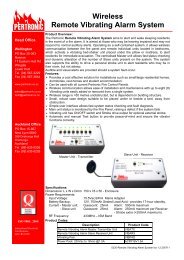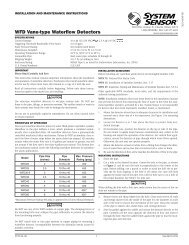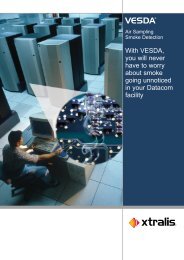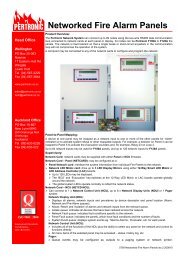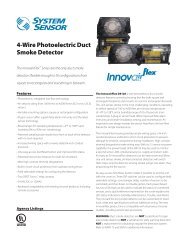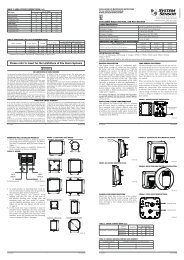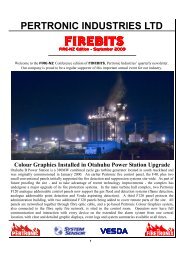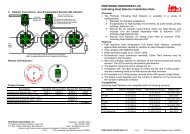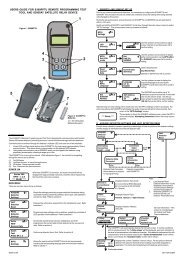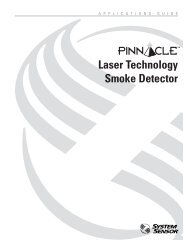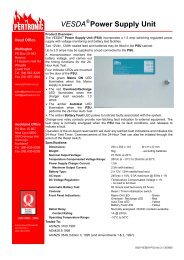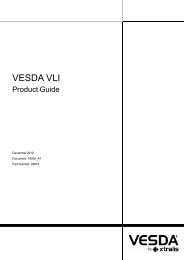LaserFOCUS VLF-250 Product Guide - Pertronic Industries Ltd
LaserFOCUS VLF-250 Product Guide - Pertronic Industries Ltd
LaserFOCUS VLF-250 Product Guide - Pertronic Industries Ltd
Create successful ePaper yourself
Turn your PDF publications into a flip-book with our unique Google optimized e-Paper software.
VESDA ®<strong>LaserFOCUS</strong> <strong>VLF</strong>-<strong>250</strong> <strong>Product</strong> <strong>Guide</strong>The pre-engineered pipe network solutions described in sections Single pipe network on page 10and Branched pipe network on page 11 achieved transport times of less than 60 seconds foropen hole sampling and less than 90 seconds for capillary sampling.Where the VESDA <strong>LaserFOCUS</strong> is located outside the protected area (e.g. in a corridor outsidethe room), consideration must be given to returning the detector exhaust air to the protectedenvironment to balance the pressure differences that may exist. In the majority of applications,this is not necessary as pressure differences are minimal.Where practical considerations fall outside pre-engineered designs or where pressuredifferences exceed 50 Pa, in situations where the detector is located outside the protected area,the solutions presented in this manual may not be suitable and it is recommended that alternatedesigns are verified by a suitably qualified installer using ASPIRE2.The following points should be considered when installing the sampling pipe:• minimize flexing in sampling pipes by supporting the pipe every 1.5 m (5 ft) or less, or at adistance described in local codes and standards.• evenly arrange the sampling pipe network over return air grilles• sampling pipes fit firmly into the tapered detector ports, DO NOT glue this connection• allow sufficient movement at the detector to permit pipe removal for maintenance• keep the exhaust deflector fitted to prevent foreign objects falling into the detector• keep the return air pipe as short as possible to minimize airflow resistance in the pipe• pipe ends must be made smooth for bonding• sampling holes must be drilled in line and perpendicular to the pipe.• sample holes must be clear of rough edges and debris• pipes are free of debris• all joints must be bonded except those entering the detectorNote: In protected areas sampling holes should face into the direction of airflow or pointdownwards in static airflow situations.Note: You should try to keep the sampling holes evenly spaced.Note: For code specific information see page ii.Air sampling in a ductFor air sampling in a duct please refer to the VESDA System Design Manual for duct probedesign. For code specific information see page ii.1.5 CommissioningGeneralThe VESDA <strong>LaserFOCUS</strong> has been designed to simplify commissioning processes. TheAutoLearn function allows the unit to assess its environment and setup appropriate alarm andflow thresholds. The unit may also be programmed through VESDA System Configurator (VSC)software, for all programmable settings. For further information see Factory Defaults on page 31.Note: Detectors should be commissioned with a smoke test.Prior to commissioning the detector, check:1. That the power is connected and on.2. That the pipe network is clean and correctly fitted with all joints correctly seated and sealed(except the pipe which enters the detector which must not be glued).3. That the exhaust deflector is fitted.For code specific information see page ii.19



